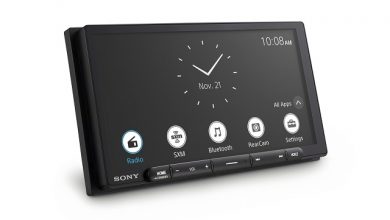Global automotive connectivity control unit is forecast to grow at a CAGR of 10.5% to be valued at US$ 11.7 Billion by 2032 – Future Market Insights

The automotive connectivity control unit is considered to be a vital part of connectivity in a vehicle. The automotive connectivity control unit is used to communicate and transmit the data to the outside world. The unit controls the vehicle-to-vehicle and vehicle-to-infrastructure communication which is a necessary function in automated cars. Connected cars have incredible potential in the future of the automotive industry. Already several automotive manufacturers offer driver convenience services, such as connected maps, internet radio, concierge and emergency dispatch, etc. Over the last few years, automotive wireless and electronics technologies have grown by leaps and bounds. Innovations in these technologies, combined with changing lifestyles and device convergence, are enabling automobiles to extend the driving experience beyond traditional vehicle transport. This in turn may significantly drive the demand for automotive connectivity control units subsequently adding to the global automotive connectivity control unit market during the forecast period.
Global Automotive Connectivity Control Unit demand is projected to be valued at US$ 58.9 Billion in 2022, forecast to grow at a CAGR of 10.5% to be valued at US$ 11.7 Billion from 2022 to 2032.
The growing demand for automotive-connected cars is considered to be the major factor driving the demand for automotive connectivity control units across the globe. Increasing implementation of stringent regulations in various countries concerning the safety of vehicle occupants is also one of the major factors fueling the demand for automotive connectivity control units during the forecast period.
Autonomous vehicle technology and electrified powertrains are expected to generate significant interest in consumers and are estimated to possess long-term value potential. The automotive connectivity control unit used in advanced driver assistance systems plays a crucial role in autonomous driving technology. Owing to the several benefits and enhancing the occupant’s safety, the demand for automotive connectivity control units is projected to witness noteworthy growth in the coming years.
Challenges and Opportunities in Automotive Connectivity Control Unit
Challenges
The automotive connectivity control unit is considered to be one of the advanced technologies and is mainly implemented in high-end vehicles as the cost of the technology is relatively higher. The high cost of the technology may act as a restraining factor to the growth of the automotive connectivity control unit market during the forecast period.
Opportunities
Automotive manufacturers are shifting production plants or establishing new ones in emerging automotive markets to capitalize on the growing demand for automobiles and benefit from lower capital and labor costs in these regions.
The swift progression of the automobile industry and the soaring penetration of vehicle & system manufacturers are pushing the market growth. The global growth of the automobile industry is attributed to the low-priced availability of labor and the reducing cost of raw materials & electronic components. Snowballing automobile production in China and Japan is supplementing the demand for efficient control units to help vehicular functioning. Moreover, the need to incorporate ADAS, safety, and comfort features in all new vehicles to eradicate accidents is generating several opportunities for the Market.
Market Competition
Some of the key participants present in the global demand of the Automotive Connectivity Control Unit market include Robert Bosch GmbH, STMicroelectronics, Continental AG, Hyundai Autron, Denso Corporation, and Infineon Technologies AG, among others.
- In March 2021, Bosch mobility solutions developed a V2X connectivity control unit which is the center for connectivity functionality in commercial vehicles. It enables commercial vehicles to communicate with one another and with objects in the immediate surroundings.
- It forms the basis for innovative driver assistance systems that see beyond what the driver can normally see and, as a result, can increase safety on the roads.
These insights are based on a report on Automotive Connectivity Control Unit Marketby Future Market Insights


